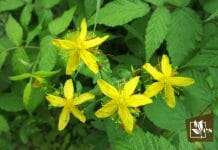- When to Plant Corn in San Diego: Optimal Seasons and Tips - July 19, 2024
- When to Plant Hydrangeas in Illinois: Best Timing for Optimal Growth - July 19, 2024
- Why Are My Radishes Growing Above Ground: Uncovering the Causes - July 19, 2024
Lemon balm companion plants include plants that help boost lemon balm growth and also complement it visually. Lemon balms of the Melissa genus, scientifically known as Melissa officinalis from the Lamiaceae family, are full sun lovers and pair nicely with plants having the same growth requirements.
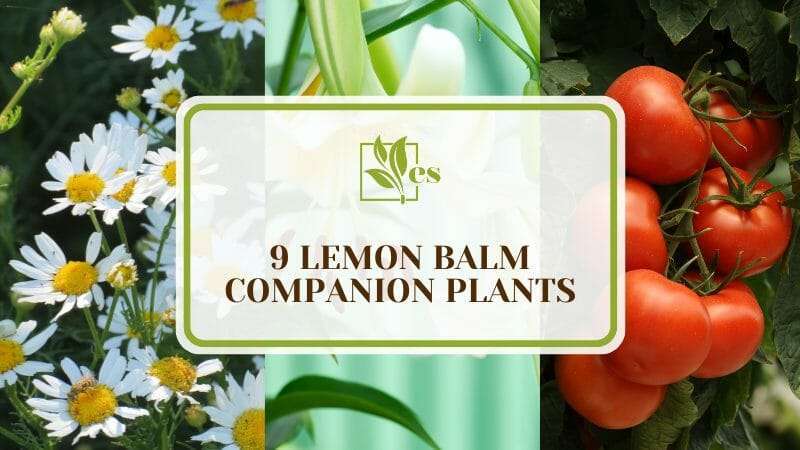
While it is important to know what to pair with these plants, it is equally imperative to know what not to plant with lemon balm. We have gathered plants that offer great companionship to lemon balms, also known as sweet balms.
“Companion planting provides the potential to alter soil nutrients in a beneficial manner.”Michigan State University Extension
JUMP TO TOPIC
9 Lemon Balm Companion Plants
Lemon balm companion plants consist of plants that have the same survival needs as lemon balms and boost plant growth. Our growing guide is all you need to know about companion planting and supplemental gardening tips.
1. Melons
Melons are annual plants and are members of the Cucurbit family. The Cucurbits are a native of Southern Mexico and Central America.
They have a sweet fragrance and come in a wide range of sizes ranging from about 1.7 ounces to 30 pounds! The Cucurbit comes in round and oblong forms and has white and canary yellow flowers and heart-shaped leaves with wavy edges.
Melons are primarily grown for their aromatic fruits. Planting lemon balm and melons together will fill your garden with strong aromatic scents.
– Growing Season
Melons have a slow to moderate growth rate. A melon plant requires up to eight to ten weeks of warm weather from June right through until August. During this time, the melon vine grows five to nine flowers and then starts to flower.
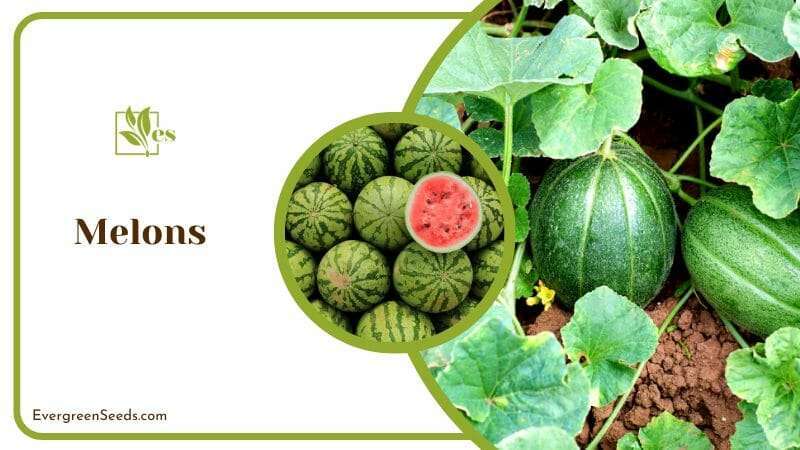
If you plan to grow them in a greenhouse, March, and April are the best months to sow your seeds. But, if you are growing them outdoors, April or May would be more appropriate so that the seeds are ready by the time the weather gets hot.
– Specific Needs
Melons can be directly transplanted very successfully and even grown simply through seeds. Sow a couple of seeds in groups and spread them about 18 to 24 inches apart. The crop takes approximately a 100 days to mature, and the maximum height it can reach is 24 inches.
The plants prefer to grow in full sun and well-drained, loamy, sandy soils with a slightly acidic pH. They need 1to 2 inches of water per week as they grow, and once the plants start to bear fruit, you do not need to water the plants that regularly.
Strive for moist soil, but not soggy. Avoid watering the leaves and ensure that the base of the vines gets plenty of water in the morning.
2. Chamomile
Chamomile belongs to the Asteraceae family and is native to Europe. It is a low-growing plant, both perennial and annual, and has two types: Roman Chamomile and German Chamomile.
The chamomile plant makes a good companion and has fine, sparse, leathery leaves and white flowers with a strong apple-like aroma that attracts butterflies and bees. If you plan on growing lemon balm in pots, chamomiles grow perfectly in them too.
– Growing Season
Plant chamomile in spring after the frost has passed. It grows well in places like raised beds, containers, and gardens.
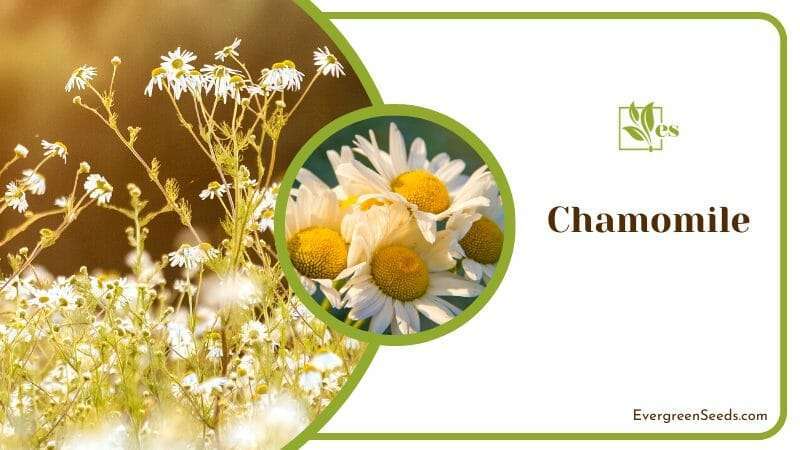
Chamomiles have a fast growth rate and can be only eight to twenty-four inches tall and eight to twelve inches wide. Lemon balms are less susceptible to powdery mildew than chamomiles due to their short height.
– Specific Needs
Chamomile propagation depends upon the type of chamomile that you are propagating. The easiest propagation method for roman chamomiles is through root division, while german chamomiles are best propagated through seeds. The propagation season between both types is spring.
Chamomile plants love to grow in full Sun and well-drained soil with a neutral pH. Young chamomiles need one inch of water per week, but as they mature, they become drought tolerant, needing water in extremely hot climates. However, adding water in extremely hot climates will leave your melon plants forever grateful.
3. Lemon Verbena
Lemon verbena, also known as a lemon beebrush, belongs to the Verbenaceae family and is native to Argentina and China. The plant’s leaves are pale-green and spear-shaped and produce a strong lemon fragrance with the slightest touch. It bears white flowers in the form of clusters.
Lemon balms make good lemon verbena companion plants because they thrive in the same conditions and their frangrance will complement that of the balm.

– Growing Season
The best season to plant lemon verbena is spring, right after the risk of fall frost has passed. By summer, you will have your plant blooming. Lemon verbena is a slow-growing plant that takes ten years to mature and reach 6 feet.
– Specific Needs
Lemon verbena is propagated through semi-ripe cuttings in the same way as other semi-ripe cuttings. The plants love to grow in full Sun and rich and moist soil with a slightly acidic pH. Water them regularly to avoid plant stress and pest infestation.
4. Oregano
Oregano is a perennial herb belonging to the Lamiaceae family, native to Europe, Asia, and the Mediterranean. The plant’s leaves are egg-shaped to round, with tiny purple flowers; each flower spike has a handful of flowers.
Grow lemon balm as oregano companion plants for attracting beneficial insects like bees for pollination, and witness your plant grow.
However, only some herbs pair well with lemon balms. Now you might be thinking, can you plant thyme and lemon balm together? No, you cannot!.

Thyme needs dry soils to survive, while lemon balms thrive in moist soil, and the same is the case with other popular plant herbs like ginseng and ginseng companion plants.
– Growing season
Like other companion plants, the best season to plant oregano is spring, just as the fall frost comes to an end and blooms in summer. It takes eight to ninety days for the oregano plants to mature, but you can harvest oregano leaves within six to eight weeks.
– Specific Needs
Propagating oregano through root division or cuttings will get you a dense and healthy harvest. Oregano loves to grow in the full sun and in well-draining soil with an acidic to neutral pH. It needs almost one inch of water per week, and overwatering the plant can make the roots rot.
5. Bee Balm
Bee balms are herbaceous perennials and lovely cut flowers that belong to the Lamiaceae family and are native to North America. They have square stems and two to five inches long ovate leaves set in an opposite arrangement.
Plant lemon balm as bee balm companion plants as they are full of nectar and are a great way of attracting beneficial pollinators. The flowering purple-burgundy bee balms add a beautiful contrast to your sweet balms.
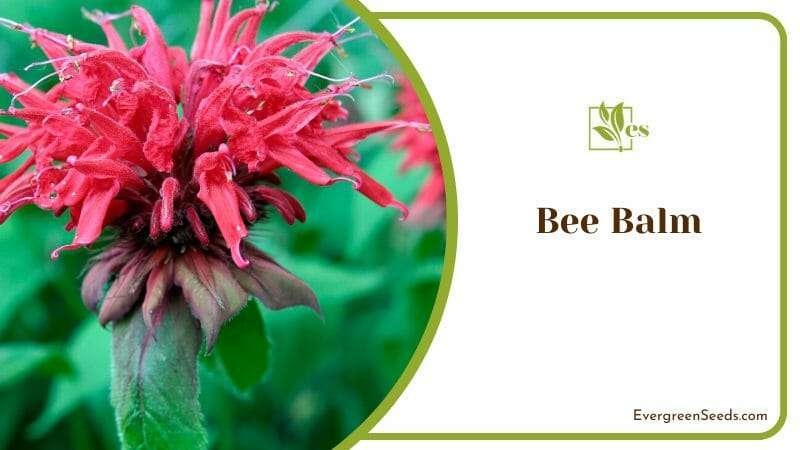
– Growing Season
The best season to plant bee balms is spring or fall; once the fall, frost disappears. They have a fast growth rate and start to germinate within two to three weeks. The plants reach a height between 2 to 4 feet when fully mature.
– Specific Needs
The quickest way to propagate bee balms is through underground stems: all you need to do is dig up the clumps, divide them and replant them again. Bee balms grow in full to partial Sun and rich, moist soil with an acidic to neutral pH. Water the plant weekly to prevent the soil from drying out.
6. Tomatoes
Tomato plants are grown as perennials in the tropics, but in the rest of the areas they are grown in, they are grown as annuals and are a perfect addition to your vegetable garden even though they are technically a fruit!
They belong to the Solanaceae family and are native to South America. The color of the plant leaves varies from pale light green to a deep dark green depending upon the variety.
Lemon balm companion plants and vegetables are just as important as the rest of the companion plants.
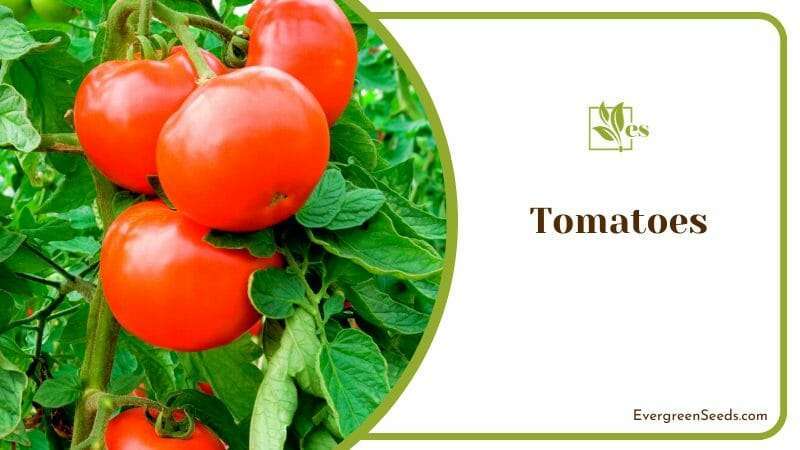
Lemon balm and tomatoes make an excellent pairing because of certain qualities like improving soil quality, promoting better growth, and even enhancing the flavor of the tomatoes.
– Growing Season
The plants are best planted in spring, after the fall frost, and are ready to be harvested between July and September. They have a slow growth rate and may consume up to two to three months to mature, depending upon the variety. Smaller tomatoes tend to ripen faster than bigger ones.
– Specific Needs
Tomatoes love to grow in full Sun and well-drained soils that have a slightly acidic pH. Water tomatoes daily in the growing season.
The easiest way to propagate tomatoes is through rooting in water. Place your suckers in a glass of water, ensure the leaves are well above the water level, and place the glass in a warm spot. You will notice roots emerging within ten to fourteen days, after which you can plant them outdoors.
7. Allium
Alliums are perennial bulbs that belong to the family of Amaryllidaceae and are native to the Middle East. Allium leaves are long and husky that remain attractive almost all year round. The flowers are round, resembling pom poms, and come in white, pink, purple, yellow, and green colors.
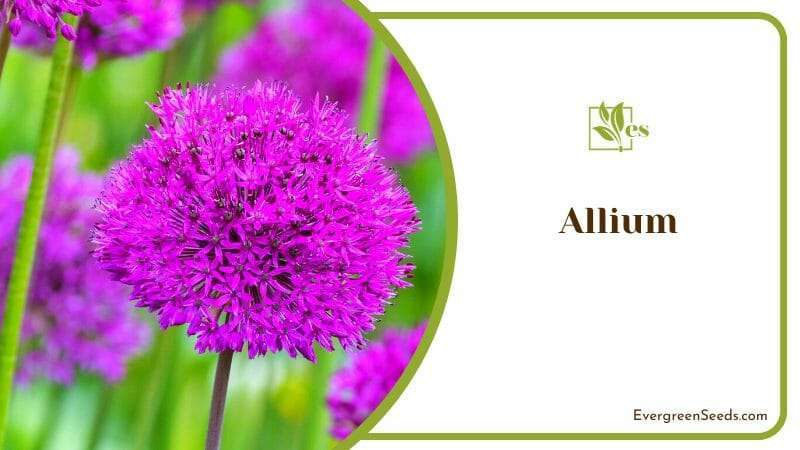
Lemon balms make great allium companion plants because they both have pest-deterring properties.
– Growing Season
Fall is the best season to plant alliums in your garden. The plants bloom around spring, but there are fall bloomers too. They have a moderate growth rate and an average lifespan of five years. The mature plants can be up to 4 feet tall and 3 inches wide.
– Specific Needs
You can propagate alliums through ripe seeds. The alliums love to grow in full Sun and can tolerate all types of soil, but they must be well-draining. They can be watered infrequently.
8. Summer Savory
Summer savory is an annual herb that belongs to the Mint family and is native to Eastern Mediterranean and Caucasus. The plants have dark green arrow leaves and bear white, pink, and lilac flowers. Summer savory companion plants, like rosemary, can also be added to the combination for additional plant growth benefits.
– Growing Season
The best season to plant summer savory is spring, right after the fall frost has passed.
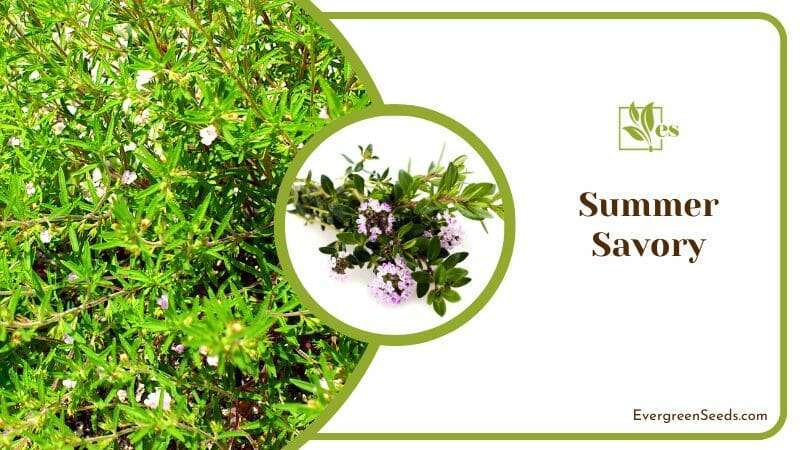
They have a fast growth rate, reach a maximum height of twenty-four inches, and bloom in summer with beautiful flowers.
– Specific Needs
Summer savory can self-seed, but it can also be propagated through cuttings. The plants grow in full Sun and well-drained loamy soil. Furthermore, it would be best if you watered it regularly to keep the soil moist.
9. Sunflowers
Sunflowers are annuals that belong to the Asteraceae family and are native to North America. The plants have dark green leaves with an alternate arrangement along the stem.

Sunflowers promote the health of not only lemon plants but also the neighboring herbs and vegetables.
– Growing Season
Like most plants, the best season to plant sunflowers is spring, right after the fall frost has passed.Sunflowers have a fast growth rate and can be as tall as 12 feet and as wide as 3 feet within three months of planting.
– Specific Needs
Sunflowers can be easily propagated through seeds, but propagating through cuttings and rooting them will ensure uniformity in your garden. The plants thrive in full Sun and well-drained soil, irrespective of the pH. Water sunflowers regularly to promote growth. If your flowers start drooping, then it is a sign that they need more water.
References:
- Chamomile. NCCIH.
Retrieved from https://www.nccih.nih.gov/health/chamomile - How to grow oregano. RHS.
Retrieved from https://www.rhs.org.uk/herbs/oregano/grow-your-own


